Home > Company > Tire Safety > Choosing Tires > Determining Tire Size
Once you have determined it’s time to buy tires, you’ll need to know what size tires are correct for your vehicle. Depending on what you drive, you may be interested in how to find the right tire for your…
This information is usually inside your car’s doorjamb, in your owner’s manual. To ensure your current tire or a replacement tire you may be looking at matches your vehicle’s requirements, it will be good for you to understand how tire sizing works. You may have never paid attention to the string of numbers and letters on every tire, but it’s a gold mine of information.
If you’re unsure of how to read tire measurements from your tire walls, the information and graphics below will tell you how to read tire size, understand and interpret it. If you decide you want to substitute a new size or tire type, consult an authorized tire retailer who can expertly advise you, because many optional tire sizes may have different load capacities and could require wheels of a different rim width or diameter and different inflation pressure.
Not sure you need new tires? Our Tire Replacement Guidance article will help you determine whether it’s time to retire your tires.
Most passenger cars, SUVs and light pickups (1/2 ton and smaller) will come with tires that are either P-Metric or Euro-Metric. For P-Metric tires, you’ll see the letter “P” before the number sequence begins: P225/70R16 97H. P-metric is a designation standardized by the Tire and Rim Association for a “passenger car” tire type. For Euro-Metric there will be no preceding letter before the number sequence begins: 225/70R16 98H. Euro-Metric is a designation standardized by the European Tyre and Rim Technical Organization for a “passenger car” tire type. Both P-Metric and Euro-Metric size tires are designed to primarily be used on passenger vehicles, which can include cars, minivans, SUVs, and other light duty pickup trucks.
Both P-Metric and Euro-Metric size tires are designed to primarily be used on passenger vehicles, which can include cars, minivans, SUVs, and other light duty pickup trucks.
If your vehicle is an SUV, Pickup truck or van, you might see a different type of size designation on your placard that is specific for heavy duty light trucks and vans, especially common on ¾ ton and larger pickup trucks and vans. There are two common size types in this category, LT-Metric and Euro-Metric Commercial (aka C-type). Both size types are metric and so use the same structure as P-Metric and Euro-Metric but have some different characters in the size that differentiate them from their passenger car cousins. LT-Metric tires will have the letters “LT” before the size number sequence: LT245/75R17 119/116R Load Range E. Notice that there are two load index numbers and a Load Range, see the section on Load Index for more info. LT-Metric is a designation standardized by the Tire and Rim Association for a “light truck” type tire.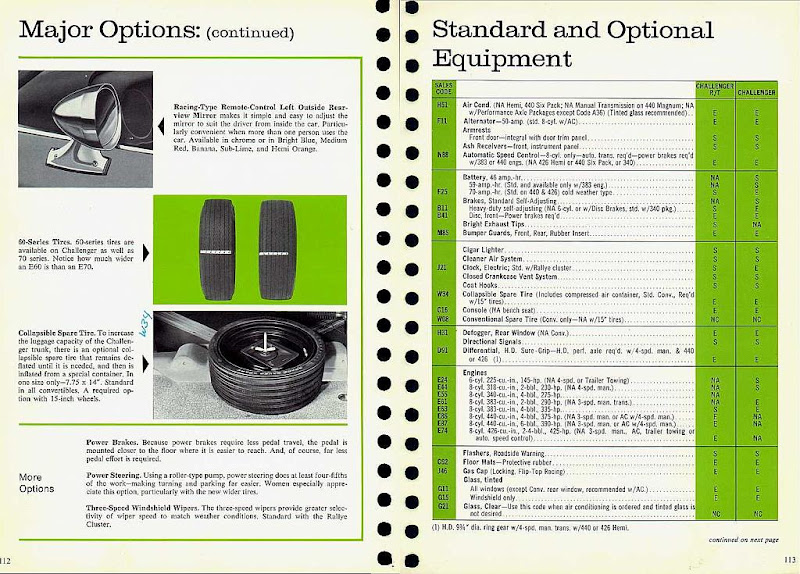 Euro-Metric Commercial or C-Type tires will look very similar to a passenger Euro-Metric size except that there will be a “C” right after the rim size: 23/65R16C 121/119R. Notice that the C-type tires also have two load index numbers. Euro-Metric Commercial, or C-Type is a designation standardized by the European Tyre and Rim Technical Organization for a light truck type tire. Light truck tires are designed to be used on vehicles capable of carrying heavy cargo and are usually only specified by a vehicle manufacturer on vehicles exceeding a certain load capacity.
Euro-Metric Commercial or C-Type tires will look very similar to a passenger Euro-Metric size except that there will be a “C” right after the rim size: 23/65R16C 121/119R. Notice that the C-type tires also have two load index numbers. Euro-Metric Commercial, or C-Type is a designation standardized by the European Tyre and Rim Technical Organization for a light truck type tire. Light truck tires are designed to be used on vehicles capable of carrying heavy cargo and are usually only specified by a vehicle manufacturer on vehicles exceeding a certain load capacity.
Other types of tires that fall into the Metric sizing type are Temporary Spares, they start with “T”. If you see a size that starts with “ST,” that means “special trailer” and is only for use on a trailer.
Regardless of whether you are looking at a P-Metric, Euro-Metric, LT-Metric, Euro-Metric Commercial, T or ST tire the numbers in the size mean the same thing.
The first number to appear in your tire size information is the width, in millimeters, of the correct tires for your vehicle: P225/70R16 91S.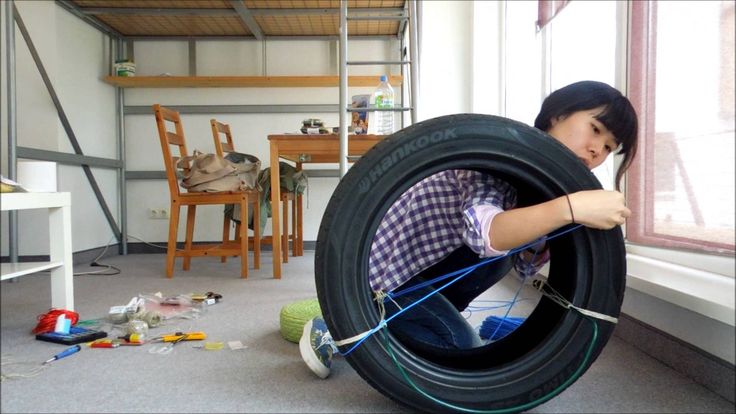
Tire width always refers to the measurement from one sidewall to another. Thus, a tire with the measurement “P225” is for a passenger vehicle and has a nominal width of 225 millimeters.
After the slash mark, the next number you see is for the tire’s aspect ratio, which essentially tells you how tall your tire’s profile is: P225/70R16 91S. Aspect ratios are delivered in percentages. Tire makers calculate the aspect ratio by dividing a tire’s height off the rim by its width. If a tire has an aspect ratio of 70, it means the tire’s height is 70% of its width.
Lower aspect ratio tires, such as a 60 series, generally offer vehicle handling performance advantages over higher aspect ratio tires, such as a 75 series, but a typical trade off can be ride harshness.
After the aspect ratio comes a letter that indicates the type of internal construction maintaining your tire’s stability: P225/70R16 91S.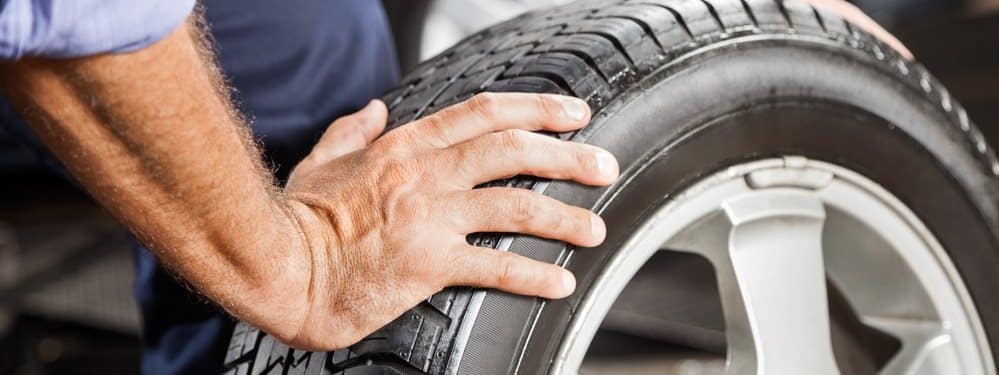
There are two types of construction that you may see on the sidewall of a tire:
Radial tires are the most common tires on the road in the United States today; thus “R” will usually be shown in the tire size designation. Radial construction means the tire’s internal ply cords are oriented in a radial direction, from one bead over to the other, essentially perpendicular to the direction of rotation. You may also occasionally see RF indicating a run flat tire or ZR indicating a tire that is a speed rating higher than V.
The next number is the diameter code, in inches, of the rim onto which the tire can be mounted. For example, a tire with the P225/70R16 91S would fit a rim with a 16-inch diameter.
Load index can be a confusing subject because there are so many different caveats, but we will try to explain everything here.
The next figure after the rim size in the sequence is your tire’s load index, which tells us how much weight, in pounds, the tire can support when fully inflated: P225/70R16 91S
We call it the load “index” because the number doesn’t tell us the precise number of pounds the tire can carry, at least not by itself. However, the number does correspond to a specific load capacity listed in an index. Beginning with 1 and ending with 150, numbers in the load index represent carrying capacities of 99 to 7385 lbs.
There are two types of load types for passenger tires though, Standard Load and Extra Load. If a tire is Standard Load there will be no markings indicating it but if it is Extra Load the letters XL will appear after the size and load index.
Standard Load Euro-Metric: 215/55R17 94V
Extra Load Euro-Metric: 215/55R17 98V XL
Passenger car tires like P-Metric and Euro-Metric will only have one load index number where LT-Metric and Euro-Metric Commercial (C-Type) will have two numbers separated by a slash. The first number is the load index if the tire is used in a single application, the second number is the load index if the tire is used in a dual application. Passenger type tires cannot be used in a dual application. Light truck tires will also have a Load Range that is indicated by a letter, such as Load Range E. Load Range is an older term that is still commonly used in the industry so you may hear your tire dealer reference it but the load index numbers are the best way to ensure you have the proper tire.
The first number is the load index if the tire is used in a single application, the second number is the load index if the tire is used in a dual application. Passenger type tires cannot be used in a dual application. Light truck tires will also have a Load Range that is indicated by a letter, such as Load Range E. Load Range is an older term that is still commonly used in the industry so you may hear your tire dealer reference it but the load index numbers are the best way to ensure you have the proper tire.
One important but often misunderstood facet about load index is that the load index numbers between standards organizations (P-Metric vs Euro-Metric) are not necessarily on the same scale. Meaning that two tires in the two different systems that have the same load index number could have different maximum load capacities. This is why it’s important to not only look at the load index number but also verify the actual load capacity.
The final figure in a tire size sequence is the speed rating, which is indicated by a letter: P225/70R16 91S.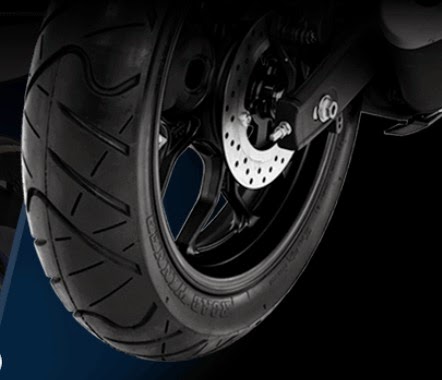 Just as your load index number corresponds to a specific load, your speed rating letter corresponds to a particular speed capability based on a standardized laboratory test.
Just as your load index number corresponds to a specific load, your speed rating letter corresponds to a particular speed capability based on a standardized laboratory test.
For example, a tire with speed rating “S” is rated for up to 112 mph, while a tire rated “R” is up to 106 mph. Remember that this isn’t a recommended cruising speed. Of course, you should always follow legal speed limits on roadways.
Replacement tires must have the same or higher speed rating as the vehicle’s Original Equipment to maintain vehicle speed capability. If a vehicle has tires with different speed ratings, it is the speed rating of the “slowest” tire that dictates the vehicle top speed.
There is one last sizing type that you should know about, especially if you are in the market for off road tires for a light truck or SUV. It’s called a Flotation size and the numbers in this sizing format are very different from the Metric formats. Flotation sized tires are similar to LT-Metric tires in application except for a few important points. Number one, they cannot be used in dual applications and number two, an equivalent size tire may have different load capacity than its LT-Metric counterpart.
Flotation sized tires are similar to LT-Metric tires in application except for a few important points. Number one, they cannot be used in dual applications and number two, an equivalent size tire may have different load capacity than its LT-Metric counterpart.
The first number in the Flotation tire size is the overall diameter in inches. Pretty straight forward.
The second number is the section width (sidewall to sidewall) measurement in inches. Again, fairly simple.
After the section width comes a letter that indicates the type of internal construction: 33X12.50R17LT 120Q.
This is the same as is found in the metric sizing systems.
There are two types of construction that you may see on the sidewall of a tire:
Radial tires are the most common tires on the road in the United States today; thus “R” will usually be shown in the tire size designation.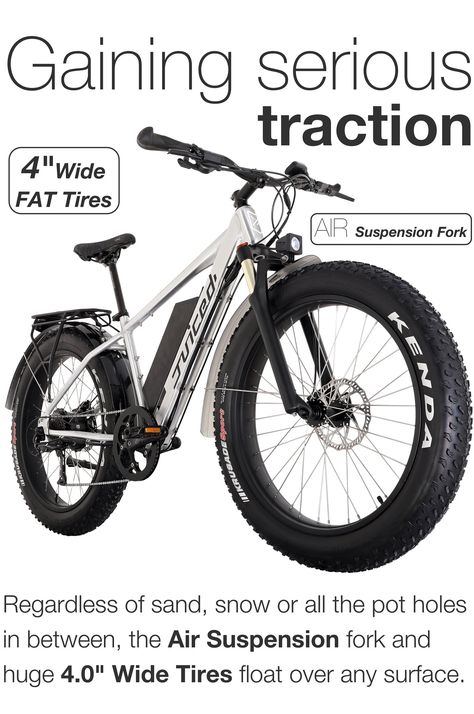 Radial construction means the tire’s internal ply cords are oriented in a radial direction, from one bead over to the other, essentially perpendicular to the direction of rotation.
Radial construction means the tire’s internal ply cords are oriented in a radial direction, from one bead over to the other, essentially perpendicular to the direction of rotation.
The next number is the diameter code, in inches, of the rim onto which the tire can be mounted. For example, a tire with the 33X12.50R17LT 120Q would fit a rim with a 17-inch diameter.
The letters LT will be after the Rim Diameter indicating that this tire type is intended for Light Truck vehicles similar to the LT-Metric and Euro-Metric Commercial (C-Type) tires.
Load Index and Speed Rating have the same meaning and format as the tires using the metric sizing system. Note that since flotation tires cannot be used in a dual application there will be only one load index number instead of two.
Another group of stamping on certain types of tires is the Uniform Tire Quality Grading or UTQG. This grading and stamping is required for passenger car tires (i.e. P-metric and Euro-metric) in the all season and summer categories. Dedicated winter tires, Light Truck (LT-Metric, Euro-Metric Commercial, Flotation) and Motorcycle tires are excluded from this requirement.
Quality grading is designed to make the tire purchase decision easier for you. Ideally, the system is intended to provide simple, comparative data so you can make an intelligent buying decision. However, the ratings are based upon test results achieved under special conditions. This means it’s possible to misinterpret the comparative data as it relates to your individual driving habits, conditions, etc. You should still rely on your service or tire professional for assistance.
Quality grading designates the comparative performance levels of a tire based on government-specified tests but commissioned by the individual tire manufacturers. All tire manufacturers are required to grade regular and all-season passenger tires in three categories:
All tire manufacturers are required to grade regular and all-season passenger tires in three categories:
UTQG
Treadwear
The treadwear grade is a comparative rating based on the wear rate of the tire when tested under controlled conditions on a specified government test course for 6,000 miles (9,600 km). For example, a tire graded 150 would wear one and a half times as well on the government course as a tire graded 100. However actual tire performance depends on driving habits, road characteristics, service practices, and other factors that can influence the outcome.
Traction Grades AA, A, B and C
The traction grades from highest to lowest are AA (the highest), A, B and C. They represent how well tires stop on wet pavement as measured under controlled conditions on specified government test surfaces of asphalt and concrete. C-rated tires will have the lowest traction performance.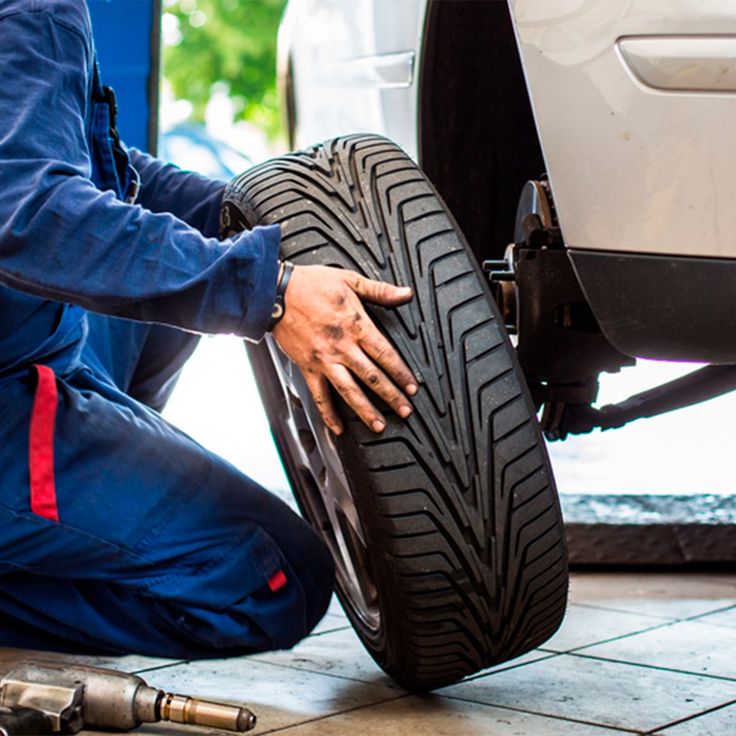
WARNING: THE TRACTION GRADE ASSIGNED IS BASED ON A WET BRAKING (STRAIGHT AHEAD) TRACTION TEST AND DOES NOT INCLUDE CORNERING (TURNING) TRACTION.
Temperature Grades A, B and C
The temperature grades A, B, and C represent the tire's resistance to the generation of heat and its ability to dissipate heat when tested under controlled conditions on a specified indoor laboratory test wheel. Sustained high temperature can cause the tire’s material to degenerate and reduce tire life, and excessive temperature can lead to sudden tire failure. The grade C corresponds to a performance level all passenger car tires must meet under the Federal Motor Vehicle Safety Standard No. 109. Grades A and B represent higher levels of performance on the laboratory test wheel than the minimum required by law.
WARNING: THE TEMPERATURE GRADE IS ESTABLISHED FOR A TIRE THAT IS PROPERLY INFLATED AND NOT OVERLOADED. EXCESSIVE SPEED, UNDER INFLATION, OR EXCESSIVE LOADING, EITHER SEPARATELY OR IN COMBINATION, CAN CAUSE HEAT BUILDUP AND POSSIBLE TIRE FAILURE.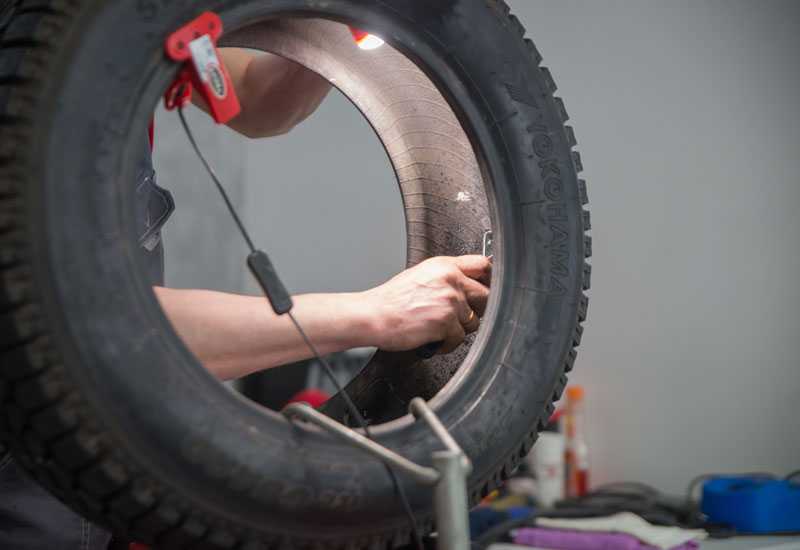
DOT Quality Grades
All passenger car tires must conform to other federal requirements in addition to these grades.
Learn about our mission, our achievements, and our ongoing commitments
Read Our Origin Story
Tire size can be confusing. Some numbers on the sidewall are listed in millimeters while others are inches. Plus, the right size for your car, truck, or trailer can differ depending on where and how you drive.
You can see your original equipment tire size in your owner’s manual or on the placard generally located on the driver’s side door jam. This is the sizing recommended by the vehicle manufacturer.
If you’re interested in switching out your tires for a different look or performance, a good place to start is the numbers and other indicators on your existing tires’ sidewall. Next, have a tire professional help you determine a tire size range that will fit your vehicle and driving needs.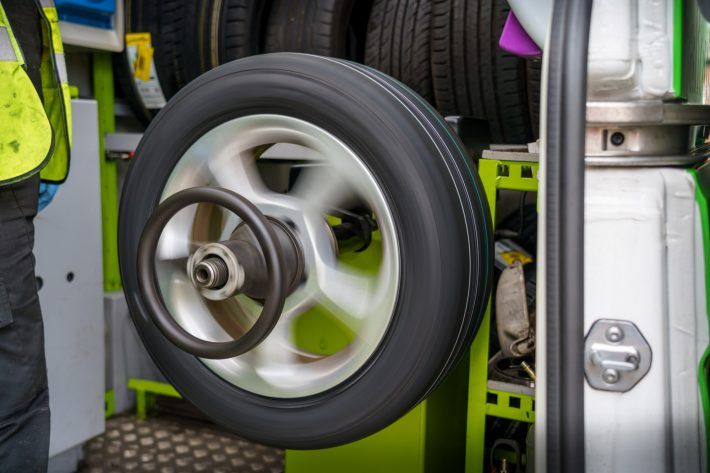
Here’s what those numbers and indicators on the sidewall indicate and how to understand them:
A: TIRE TYPE The first letter in the code tells you what class of tire it is.
P stands for passenger vehicle tire. P-class tires include cars, SUVs, crossovers, minivans and smaller pickup trucks.
LT means light truck tire, designed for vehicles that are capable of carrying heavy loads, towing trailers, or for those looking for an extra heavy duty option. These are often equipped on three-quarter or 1 ton trucks and SUVs.
ST stands for Special Trailer. These tire sizes are meant for trailers, including fifth wheels and other travel trailers, as well as boat and utility trailers.
If there’s no letter before the first number, you have a metric tire most commonly referred to as European size. It’s also measured in millimeters but may have a different load capacity than a P or LT tire.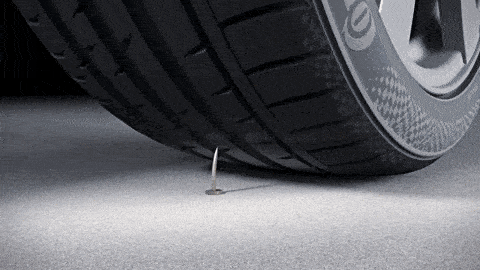
B: TIRE WIDTH The three-digit number following the letter is the tire’s width (from side to side, looking at the tire head on) in millimeters. This may also be referred to as the section width.
C: ASPECT RATIO The forward slash separates the tire width number from the two-digit aspect ratio. The bigger the aspect ratio, the higher/taller the tire’s sidewall, or “profile” as it’s sometimes called.
The aspect ratio is indicated on the tire sidewall as a percentage. It’s the height of the sidewall measured from wheel rim to top of the tread, expressed as a percentage of tire width.
In this example, the aspect ratio is 65, meaning the sidewall is 65 percent as high as the tire is wide. To get the sidewall height, take the tire width of 215 mm and convert it to inches (8.46). Then multiply this by 65% (.65). This gives you an answer of 5.5, the sidewall height in inches.
D: CONSTRUCTION TYPE This single letter tells you about the internal construction of the tire.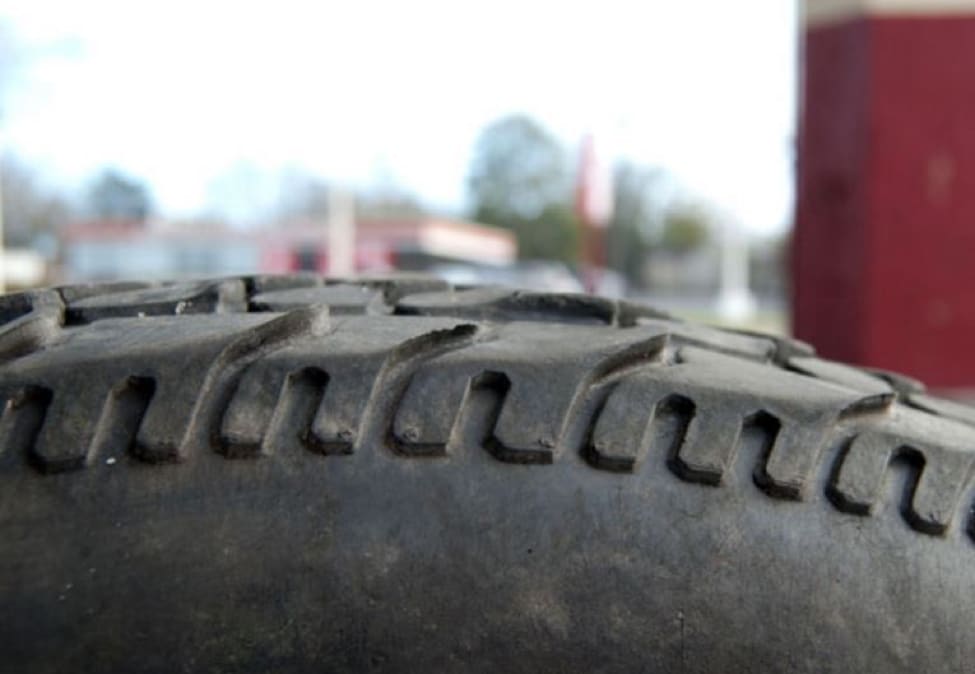
R is for radial tires, the industry standard for most tires today. They have better road grip, lower rolling resistance for better gas mileage, ride comfort and durability than previous generations of tires. In a radial tire, the plies — layers of strong cords made of a blend of polyester, steel and fabric and coated with rubber — are laid perpendicular to the direction of travel.
D is for tires built with diagonal (crisscrossed) plies, called bias-constructed tires. They are also called conventional, x-ply, or cross-ply tires. Some motorcycle and trailer tires still use this internal construction.
Some run-flat tires are identified with an F followed by the type of internal construction.
E: WHEEL DIAMETER This two-digit number specifies wheel diameter in inches. It’s the distance between the two bead seat areas (where a tire gets tightly sealed onto the wheel).
F: LOAD INDEX The two-digit or three-digit number that follows the gap specifies tire load index. The load index symbol indicates how much weight a tire can support, based on the following standard chart. In our example, the load index is 89, which indicates the tire has a load capacity of 1,279 pounds, when inflated to the tire’s maximum air pressure rating.
The load index symbol indicates how much weight a tire can support, based on the following standard chart. In our example, the load index is 89, which indicates the tire has a load capacity of 1,279 pounds, when inflated to the tire’s maximum air pressure rating.
G: SPEED RATING The last letter is the tire speed rating. This indicates the top speed it’s safe to travel at for a sustained amount of time. A tire with a higher speed rating can handle heat better and provide more control at faster speeds. The maximum operating speed of a vehicle is no more than the lowest speed rating of all tires mounted on the vehicle. (Of course, you should always abide by speed limits for safer driving.) Speed rating is usually, but not always, a single letter (see the chart).
Below you will find several charts that will help you understand tire sizing numbers, including a load index chart and speed rating chart.
A tire size calculator is a quick way to see whether the tire size you’re considering will likely fit your car, SUV, sports car, light truck or crossover.
But remember that is only an estimate. It’s important to stay within the sizing tolerances of your vehicle. Tires that are the wrong size could cause some pull in the steering wheel, rub against the suspension or body of your vehicle, reduce clearance on hills, or result in a stiffer or noisier ride.
If you’re considering mounting a different tire size on your vehicle, check with a tire expert. Find out whether the tires and wheels you have your eye on are the right fit for your vehicle’s suspension, gearing, and bodywork. And ask how any differences in revolutions per mile, tire speed, load index, and speed rating will affect your ride quality and vehicle performance.
See how new tires and rims will look on your car or truck using our Virtual Wheels simulator, available at any Les Schwab.
Find Your Store
 Everyone has the same argument - it's safer in winter. The AvtoVzglyad portal tells which tires are actually preferable in the cold season.
Everyone has the same argument - it's safer in winter. The AvtoVzglyad portal tells which tires are actually preferable in the cold season. Viktor Vasiliev
But first, let's recall what a tire profile is and what it affects. The profile is the distance between the side parts of the tire when the tire pressure (it is indicated on a sticker placed on the inside of the fuel filler flap, body pillar or threshold on the driver's side) is correct.
Here we can distinguish a pattern: the larger the tire profile, the larger the contact patch between the tire and the road. Narrow tires have a smaller contact patch, but the ground pressure is higher. So which tires are best?
To answer this question, you need to understand the conditions under which the car is operated. For example, on a slippery surface, wide tires slow down better, because their contact area with the road is higher. The same thing happens on a dry or wet track. Yes, and the car is controlled better on wide "cylinders".
The secret is simple. Most winter tires are cut with sipes that cling to the surface, reducing the braking distance. So: in the contact patch of wide tires, these lamellae are obtained more. Hence the higher efficiency of braking and the clarity of reactions to the work of the steering wheel.
Photo: racemarket
But on a packed snowy road, narrow tires are preferable. Here, it is no longer the lamellas that play an important role, but the ability of the tire to push through the snow. So the narrow “rubber” is more suitable for rutting in snow and snowdrifts. By the way, racing rally cars use narrow "rubber" just for this. In the snow, it guarantees a reliable "hook". But on icy asphalt on narrow tires it is not very comfortable.
Therefore, if you live in a city where roads are cleaned and only occasionally travel outside the metropolis, wide tires are the best option. Well, if there are solid winter roads around, choose narrow tires. But before you run to the store, open the instruction manual for the car. All recommended wheel sizes are listed there. Here you can choose from them. After all, too wide “rubber”, not intended for use on your car, can increase fuel consumption, the speedometer will start to “lie”, and the odometer will give out a mileage with an error.
All recommended wheel sizes are listed there. Here you can choose from them. After all, too wide “rubber”, not intended for use on your car, can increase fuel consumption, the speedometer will start to “lie”, and the odometer will give out a mileage with an error.
Every car enthusiast eventually comes to the moment when he wants to upgrade his car. But any modification entails not only design changes, but also the improvement or deterioration of running gear. But is it possible to change tire sizes? Undoubtedly, this also applies to car tires with disks. Replacing tires and wheels is one of the most popular tuning manipulations. Everyone knows that wider and higher tires give the car solidity and attractiveness, even if the modified vehicle belongs to the budget category. But is increasing tire size really a good idea? Let's look at three options for replacing rubber with a factory dimension of full profile, low profile or extra low profile tire replacement options.
To begin with, it should be understood that the native size is chosen by designers for a reason. It is formed based on the technical capabilities of the car, its traction and acceleration characteristics. Also, the initial size is affected by the shape of the car body, weight, and its purpose.
Tire size is determined by three values, for example, in a tire with a size of 185 65 R14 they will be interpreted as follows:
Changes to certain parameters have consequences in terms of clutch quality. Moreover, each case is private, there is no specific rule on how this or that modernization will affect the ride. In case of a planned change, it is necessary to consult with a specialist. Below is a table of replacement tire sizes.
Replacing R12 tires
| Size | 80 | 60 | 55 | 50 | 45 | 40 |
| 165/70 R12 | 145/80 R12 | 175/60 R13 | 185/55 R13 | 205/50 R14 | 195/45 R14 | --------------- |
| 175/65 R12 | (145 R12) | 165/55 R14 |
Replacing R13 tires
| Size | 80 | 60 | 55 | 50 | 45 | 40 |
| 155/70 R13 | 155/80 R12 | 185/60 R13 | 195/55 R13 | 185/50 R14 | 195/45 R15 | |
| 165/65 R13 | (155 R12) | 165/60 R14 | 185/55 R14 | |||
| 165/70 R13 | 145/80 R13 | 195/60 R13 | 195/55 R14 | 205/50 R14 | 215/45 R15 | 205/40 R16 |
| 175/65 R13 | (145 R13) | 175/60 R15 | 175/55 R15 | 175/50 R15 | ||
| 175/70 R13 | 155/80 R13 | 205/60 R13 | 205/55 R14 | 195/50 R15 | 195/45 R16 | 225/40 R16 |
| 185/65 R13 | (155 R13) | 185/60 R14 | 185/55 R15 | 205/50 R15 | ||
| 185/70 R13 | 165/80 R13 | 215/60 R13 | 195/55 R15 | 215/50 R15 | 235/45 R15 | 205/40 R17 |
| 195/65 R13 | (165 R13) | 195/60 R14 | 205/55 R15 | 195/50 R16 | 205/45 R16 | 215/40 R17 |
| 195/70 R13 | 175/80 R13 | 205/60 R14 | 205/55 R15 | 225/50 R15 | 255/45 R15 | 255/40 R16 |
R14 tire replacement0094 Replacing R15 tires R16 9 tire replacement0064 80 60 55 50 45 40 195/65 R14 (175 R13) 185/60 R15 215/55 R15 205/50 R16 225/45 R16 225/40 R17 205/65 R14 (185 R13) 205/60 R15 205/55 R16 205/50 R17 205/50 R17 225/40 R18 165/70 R14 145/80 R14 215/60 R13 205/55 R14 205/50 R15 235/45 R15 225/40 R16 175/65 R14 (145 R14) 195/60 R14 185/55 R15 215/50 R15 205/45 R16 205/40 R17 175/70 R14 155/80 R14 205/60 R14 225/55 R14 225/50 R15 255/45 R15 255/40 R16 185/65 R14 (155 R14) 185/60 R15 205/55 R15 205/50 R16 215/45 R16 215/40 R17 185/70 R14 165/80 R14 215/60 R14 215/55 R15 215/50 R16 245/45 R16 235/40 R17 195/65 R14 (165 R14) 195/60 R15 205/55 R16 225/50 R16 205/45 R17 245/40 R17 195/70 R14 175/80 R14 235/60 R14 225/55 R15 235/50 R16 215/45 R17 255/40 R17 205/65 R14 (175 R14) 215/60 R15 215/55 R16 205/50 R17 225/45 R17 225/40 R18 205/70 R14 185/80 R14 245/60 R14 235/55 R15 245/50 R16 245/45 R17 275/40 R17 215/70 R14 195/80 R14 235/60 R15 225/55 R16 265/50 R16 255/45 R17 295/40 R17
Size 80 60 55 50 45 40 205/65 R15 (185 R14) 225/60 R15 225/55 R16 215/50 R17 255/45 R17 235/40 R18 215/65 R15 (195 R14) 215/60 R16 245/55 R16 225/50 R17 245/45 R18 255/40 R18 9009four 165/70 R15 145/80 R15 215/60 R14 215/55 R14 225/50 R14 225/45 R16 255/40 R16 175/65 R15 (205 R14) 195/60 R15 205/55 R15 215/50 R16 215/45 R17 235/40 R17 175/70 R15 155/80 R15 205/60 R15 225/55 R15 225/50 R16 245/45 R16 245/40 R17 185/65 R15 (155 R15) 195/60 R16 205/55 R16 205/50 R17 225/45 R17 225/40 R18 185/70 R15 165/80 R15 215/60 R15 235/55 R15 245/50 R16 235/45 R17 265/40 R17 195/65 R15 (165 R15) 205/60 R16 215/55 R16 215/50 R17 245/45 R17 235/40 R18 195/70 R15 175/80 R15 225/60 R15 225/55 R16 255/50 R16 245/45 R17 285/40 R17 215/65 R15 (175 R15) 215/60 R16 225/50 R17 255/45 R17 255/40 R18 205/70 R15 185/80 R15 235/60 R15 245/55 R16 265/50 R16 245/45 R18 265/40 R18 225/65 R15 (185 R15) 225/60 R16 225/55 R17 225/55 R17 255/40 R19 215/70 R15 195/80 R15 235/60 R16 235/55 R17 255/50 R17 255/45 R18 295/40 R18
Size 80 60 55 50 45 40 215/65 R16 (195 R15) 205/55 R18 235/50 R18 245/40 R20 205/70 R16 195/80 R15 235/60 R16 235/55 R17 255/50 R17 255/45 R18 285/40 R18 215/65 R16 (195 R15) 205/55 R18 235/50 R18 255/40 R19 Read this section
What winter tires to buy? Expensive or cheap?
To begin with, it is worth knowing the division into classes of car tires. It is useful to know when to buy expensive premium tires and when to choose cheaper analogues from the economy segment...
It is useful to know when to buy expensive premium tires and when to choose cheaper analogues from the economy segment...
06 September 2022, 10:06 Tires for electric vehicles - which ones to choose?
Driving an electric car is different from driving a car with an internal combustion engine. This is felt by both the driver and passengers. For tires, another type of drive is also important. Rubber on..
August 09, 2022, 11:58 Who are low profile tires suitable for?
Car wheels are the first thing that comes to mind in the context of visual tuning. Not every car will be better after installing a tailgate spoiler. And big..
18 April 2022, 15:42 What are UHP (HP) tires? Best choice for summer
High Performance and Ultra High Performance tires are becoming increasingly popular all over the world.